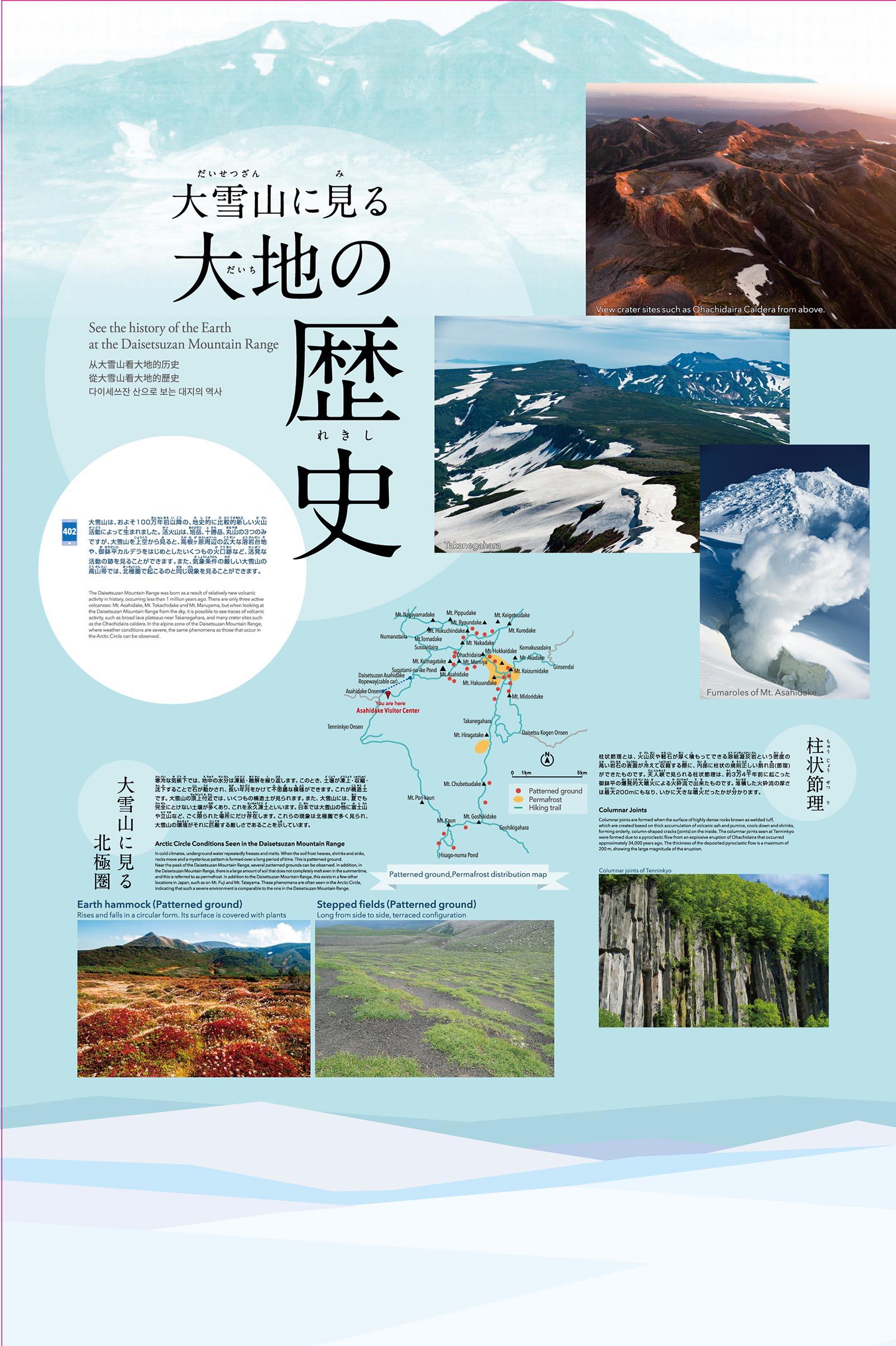




The Daisetsuzan Mountain Range was born as a result of relatively new volcanic activity in history, occurring less than 1 million years ago. There are only three active volcanoes: Mt. Asahidake, Mt. Tokachidake and Mt. Maruyama, but when looking at the Daisetsuzan Mountain Range from the sky, it is possible to see traces of volcanic activity, such as broad lava plateaus near Takanegahara Plateau, and many crater sites such as the Ohachidaira caldera. In the alpine zone of the Daisetsuzan Mountain Range, where weather conditions are severe, the same phenomena as those that occur in the Arctic Circle can be observed.
Columnar joints are formed when the surface of highly dense rocks known as welded tuff, which are created based on thick accumulation of volcanic ash and pumice, cools down and shrinks, forming orderly, column-shaped cracks (joints) on the inside. The columnar joints seen at Tenninkyo were formed due to a pyroclastic flow from an explosive eruption of Ohachidaira that occurred approximately 34,000 years ago. The thickness of the deposited pyroclastic flow is a maximum of 200 m, showing the large magnitude of the eruption.
In cold climates, underground water repeatedly freezes and melts. When the soil frost heaves, shrinks and sinks, rocks move and a mysterious pattern is formed over a long period of time. This is patterned ground. Near the peak of the Daisetsuzan Mountain Range, several patterned grounds can be observed. In addition, in the Daisetsuzan Mountain Range, there is a large amount of soil that does not completely melt even in the summertime, and this is referred to as permafrost. In addition to the Daisetsuzan Mountain Range, this exists in a few other locations in Japan, such as on Mt. Fuji and Mt. Tateyama. These phenomena are often seen in the Arctic Circle, indicating that such a severe environment is comparable to the one in the Daisetsuzan Mountain Range.